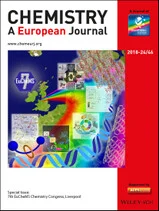OLD2 News
News > OLD news
RECENT RELEVANT RECOGNITIONS OF G. CENTI
- 2021 Recipient of Chinese Academy of Science President’s International Fellowship Initiative, PIFI, as Distinguished Scientist (G. Centi)
- 2021 Recipient of Humboldt Research Award (G. Centi)
- 2021 CAS (Chinese Academy of Sciences) President's International Fellowship Initiative, PIFI (Visiting Scientists) (S. Perathoner)2021 Mario Giacomo Levi Medal of the Italian Chemical Society for the innovative activity carried out in the field of Chemistry that led to industrial implementation (S. Perathoner)
- 2021,2022 World's top 2% scientists, according to the Stanford University ranking (G. Centi, S. Perathoner)

Messina, March 10th, 2021.
G. Centi contributed on the sustainability challenges of the Univ. of Messina
Link to the event

G. Centi represented SUNERGY at the recent Electrocatalysis Summit (April 14th, 2021)
Download the programme

Partecipation at the EU GREEN WEEK 2021 PARTNER EVENT "Towards Zero Pollution in the Production of Green Fuels and Chemicals" June 4th 2021, 10:00 - 12:35 CEST, with two contributions given by
- G. Centi, coordinator of DECADE project,
- S. Perathoner, coordinator of OCEAN project.
Download the webinary poster
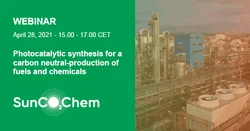
G. Centi, coordinator of DECADE project, presented the project results at the
on-line, April 28th – 15.00 – 17.00 CEST
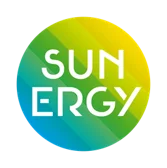 SUNERGY aims at becoming a large European Research and Innovation initiative working towards the conversion and storage of renewable energy into fossil-free fuels and chemicals. It builds on two initiatives funded under Horizon 2020: SUNRISE and ENERGY-X. They were selected by the European Commission to prepare for FET Flagship status, a billion-euro programme which identifies "visionary, science-driven, large-scale research initiatives addressing grand scientific and technological challenges".
SUNERGY aims at becoming a large European Research and Innovation initiative working towards the conversion and storage of renewable energy into fossil-free fuels and chemicals. It builds on two initiatives funded under Horizon 2020: SUNRISE and ENERGY-X. They were selected by the European Commission to prepare for FET Flagship status, a billion-euro programme which identifies "visionary, science-driven, large-scale research initiatives addressing grand scientific and technological challenges".G Centi is part of the Board of SUNERGY, and actively contributes to
- Advocacy
- Funding Opportunities and Preparation of new proposals
- Strategic R&I Agenda


G. Centi was invited speakers at the workshop "Decarbonising European industry: hydrogen and other solutions" to present the status on "Close the carbon cycle through substitution of fossil fuels". The workshop has been organized by STOA (Panel for the Future of Science and Technology) of the European Parliament.
Download the Participants’ booklet
FULL PAPERS
Creation of NC= O active groups on N-doped CNT as an efficient CarboCatalyst for solvent-free aerobic coupling of benzylamine
H Wei, Y Ma, J Luo, KH Wu, W Xie, G Wen, CL Chiang, W Yan,S Perathoner, G Centi, Y Liu
Enhancing N2 Fixation Activity by Converting Ti3C2 MXenes Nanosheets to Nanoribbons
H Wei, Q Jiang, C Ampelli, S Chen, S Perathoner, Y Liu, G Centi
Recent advancement in deoxygenation of fatty acids via homogeneous catalysis for biofuel production
M Tabandeh, CK Cheng, G Centi, PL Show, et al
COVER
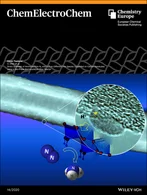
FULL PAPER
Direct synthesis of ammonia from N2 and H2O on different iron species supported on carbon nanotubes using a gas‐phase electrocatalytic flow reactor
S Chen, S Perathoner, C Ampelli, H Wei, S Abate, B Zhang, G Centi
FULL PAPERS
Weakly acidic zeolites: A review on uses and relationship between nature of the active sites and catalytic behaviour
P Lanzafame, G Papanikolaou, S Perathoner, G Centi, G Giordano, M Migliori
Chemistry and energy beyond fossil fuels. A perspective view on the role of syngas from waste sources
G Centi, S Perathoner
Deoxygenation of triolein to green diesel in the H2-free condition: Effect of transition metal oxide supported on zeolite Y
MY Choo, LE Oi, TC Ling, EP Ng, YC Lin, G Centi, JC Juan
FULL PAPERS
CO2 Reduction of Hybrid Cu2O–Cu/Gas Diffusion Layer Electrodes and their Integration in a Cu‐based Photoelectrocatalytic Cell
JF de Brito, C Genovese, F Tavella, C Ampelli, MV Boldrin Zanoni,
Elucidating the mechanism of the CO 2 methanation reaction over Ni–Fe hydrotalcite-derived catalysts via surface-sensitive in situ XPS and NEXAFS
G Giorgianni, C Mebrahtu, ME Schuster, AI Large, G Held, P Ferrer, F Venturini, D Grinter, R Palkovits, S Perathoner, G Centi, S Abate, R Arrigo
Etherification of HMF to biodiesel additives: The role of NH4+ confinement in Beta zeolites
P Lanzafame, G Papanikolaou, K Barbera, G Centi, S Perathoner
FULL PAPER
Catalysis for solar-driven chemistry: the role of electrocatalysis
S Perathoner, G Centi
FULL PAPER
Pure H2 production by methane oxy-reforming over Rh-Mg-Al hydrotalcite-derived catalysts coupled with a Pd membrane
A Fasolini, S Abate, D Barbera, G Centi, F Basile
FULL PAPER

Enhanced performance in the direct electrocatalytic synthesis of ammonia from N2 and H2O by an in-situ electrochemical activation of CNT-supported iron oxide nanoparticles
S Chen, S Perathoner, C Ampelli, H Wei, S Abate, B Zhang, G Centi
G. Centi, Chairperson Organizing Committee
S. Perathoner, Chairperson WP5 - Sustainability of products

New catalytic materials for energy and chemistry in transition
Themed collection of Chemical Society Reviews, Vol. 47 (2018)
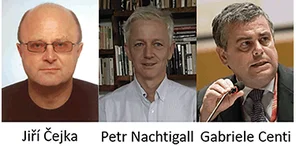
CHAIRS:
ANGELO BASILE, CNR
GABRIELE CENTI, ERIC aisbl & INSTM
MARCELLO DE FALCO, Campus Bio-Medico
GAETANO IAQUANIELLO, KT – Kinetics Technology / Processi Innovativi
FRONTIERS ENERGY RESEARCH
Plasma Technology for CO2 Conversion: A Personal Perspective on Prospects and Gaps.
A Bogaerts, G Centi
Economics of CO2 utilization: a critical analysis
G Centi, S Perathoner, A Salladini, G Iaquaniello
ROADMAP
The 2020 plasma catalysis roadmap
A Bogaerts, X Tu, JC Whitehead, G Centi, L Lefferts, O Guaitella et al.
FULL PAPERS
Highly selective bifunctional Ni zeo-type catalysts for hydroprocessing of methyl palmitate to green diesel
G Papanikolaou, P Lanzafame, G Giorgianni, S Abate, S Perathoner,
Deposition of NiO Nanoparticles on Nanosized Zeolite NaY for Production of Biofuel via Hydrogen-Free Deoxygenation
MY Choo, LE Oi, TJ Daou, TC Ling, YC Lin, G Centi, EP Ng, JC Juan
FULL PAPERS
Chemical engineering role in the use of renewable energy and alternative carbon sources in chemical production
G Centi, G Iaquaniello, S Perathoner
Highly Efficient Metal-Free Nitrogen-Doped Nanocarbons with Unexpected Active Sites for Aerobic Catalytic Reactions
Y Lin, Z Liu, Y Niu, B Zhang, Q Lu, S Wu, G Centi, S Perathoner,S Heumann, LYu, D S Su
FULL PAPER
Reassembly mechanism in Fe-Silicalite during NH4OH post-treatment and relation with the acidity and catalytic reactivity
P Lanzafame, G Papanikolaou, S Perathoner, G Centi, M Migliori, E Catizzone, G Giordano
 Catalysis, Green Chemistry and Sustainable Energy
Catalysis, Green Chemistry and Sustainable EnergyAngelo Basile, Gabriele Centi, Marcello De Falco, Gaetano Iaquaniello Eds
Studies in Surface Science and Catalysis (Elsevier Science), Vol. 179, Nov. 2019
ISBN: 9780444643377
 Horizons in Sustainable Industrial Chemistry and Catalysis
Horizons in Sustainable Industrial Chemistry and CatalysisStefania Albonetti, Siglinda Perathoner, Elsje Alessandra Quadrelli Eds
Studies in Surface Science and Catalysis (Elsevier Science), Vol. 178, Feb. 2019
ISBN: 9780444641274

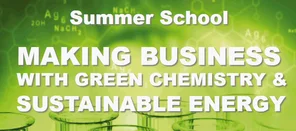
Gazzetta del Sud 16 Nov 2018
Two articles dedicated to our group on Gazzetta del Suc, a major local newspaper with about 300.000 readership.
The first article (Renewable Energies. The global challenge of Unime) reports about the recent ERC Synergy Grant: SCOPE (Surface-confined fast-modulated plasma for process and energy intensification in small molecules conversion).
The second article (Produce fertilizers....from air) reports for one of the challenges directions addressed in the research group.
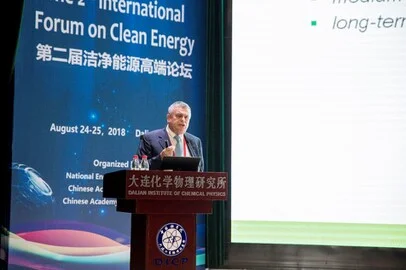
2nd Forum on Clean Energy
The conference of prof. Centi has focused on the possibilities for a chemical and energy that does not use fossil fuels to mitigate climate change, an issue that today sees China at the forefront of the new strategic development plan. For this reason, the considerable attention to these aspects on the political-managerial, as well as technical level. The opportunity was a significant possibility for the catalysis group at UniME to strengthen its visibility and international role and relations with China, with benefits for scientific and project relationships and student's attractiveness.
Siglinda Perathoner and Gabriele Centi become members of The Academy of Sciences Institute of Bologna
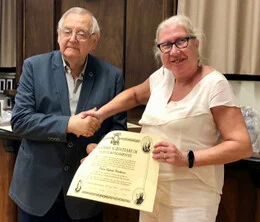
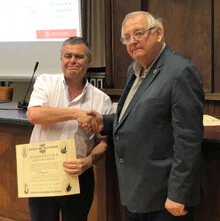
We are very proud to become members of the Academy of Sciences Institute of Bologna, Section - Mathematics, Physics, Chemistry and Geology. The photos above were taken during the award cerimony, in the frame of the meeting held in Bologna (Italy) on June 22 - 2018 on "50th Years of heterogeneous Catalysis". The photos show prof. Ferruccio Trifirò, President of the Academy of Sciences Institute of Bologna, giving the membership diploma. The Academy of Sciences Institute of Bologna has a history of more than three centuries having been founded in 1690. Greatest and most famous Italian and foreign scientists such as Luigi Galvani, Guglielmo Marconi, Albert Einstein, Giovanni Pascoli, Marie Curie, were members of the Academy.
Gabriele Centi Conferred as Honorary Professors of Tianjin University

On October 16, 2017, Professor Gabriele Centi, President of the International Association of Catalysis Societies was conferred as honorary professor by Tianjin University (TJU) when attending the 18th Chinese National Conference on Catalysis (18th NCC) organized by TJU and the Catalysis Society of China.
At the conferring cerimony held at Tianjin Social Mountain International Convention Center, Hu Wenpin, TJU’s Vice President, conferred the certificates of TJU honorary professorship and wood plaques to the professor and delivered a speech. He stated that TJU had been listed among China’s plan to develop world-class universities, and some disciplines had been selected as “First-class disciplines project”. Accordingly, The University will endeavor to strengthen its cooperation with internationally renowned professors and scholars. He believed that professor G. Centi by joining TJU would promote the development of the relevant disciplines and contribute to TJU’s "Double World-Class" plan.
REVIEW
Catalysis by hybrid sp2/sp3 nanodiamonds and their role in the design of advanced nanocarbon materials
Y. Lin, X. Sun, D. S. Su, G. Centi, S. Perathoner
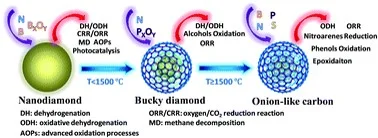
Hybrid sp2/sp3 nanocarbons, in particular sp3-hybridized ultra-dispersed nanodiamonds and derivative materials, such as the sp3/sp2-hybridized bucky nanodiamonds and sp2-hybridized onion-like carbons, represent a rather interesting class of catalysts still under consideration. Their characteristics, properties and catalytic reactivity are presented, with an analysis of the state-of-the-art of their use in gas- and liquid-phase reactions, including photo- and electro-catalysis. It is remarked that intrinsic differences exist between these and other nanostructured carbon catalysts. The analysis shows how different features make nanocarbons unique with respect to other types of catalysts and are the bases for an advanced design of nanocarbon-type catalysts. The aspects discussed regard the presence of hybrid sp2/sp3 configurations, nano-engineering related to the role of defects and vacancies in their catalytic behaviour, the creation of active sites by modification in the charge density at carbon atoms or C–C bonds, the generation of strained C–C bonds by curvature and other mechanisms, and the formation of semiconducting areas and defect sites at the interface with supported nanoparticles. The advanced strategies for identifying and quantifying active sites of carbon catalysts are highlighted.
PERSPECTIVE and EDITORIAL
New catalytic materials for energy and chemistry in transition
Jiří Čejka, Petr Nachtigall, Gabriele Centi
This perspective/editorial paper introduces the themed collection: New catalytic materials for energy and chemistry in transition
REVIEW
2D Oxide Nanomaterials to Address the Energy Transition and Catalysis
C. J. Heard, J. Čejka, M.Opanasenko, P. Nachtigall, G. Centi, S. Perathoner
Adv. Mater. 2018, 1801712
2D oxide nanomaterials offer many particular advantages for the development of novel catalysts to address the energy and chemistry transition. This review bridges the knowledge gap between individual layered oxide types, summarizing recent developments in supported ultrathin oxide films, layered clays and double hydroxides, and layered perovskites and novel 2D zeolite–based materials.

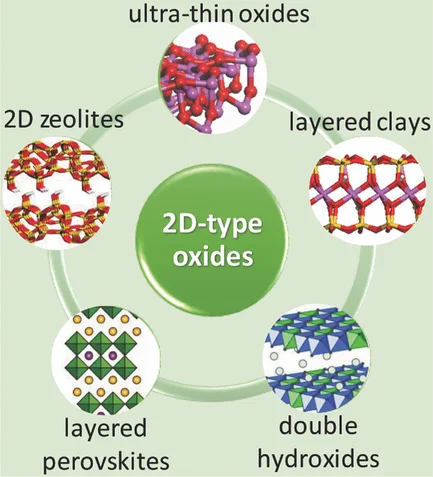
PERSPECTIVE
Waste to chemicals for a circular economy
G. Iaquaniello, G. Centi, A. Salladini, E. Palo, S. Perathoner
Chem. A Eur. Journal 2018, 24(46), 11831-11839
Special Issue: 7th EuCheMS Chemistry Congress, Liverpool
The organic fraction of municipal solid wastes represents an important and untapped carbon resource to valorize in order to reduce the actual dependence from fossil fuels and to push forward a circular economy. In their Concept article on page 11831 ff., G. Centi et al. show that it is feasible from both a technical and economic point of view to produce various chemicals from this fraction, going from methane to alcohols (as methanol or ethanol), urea and polymers as well. The implementation of these processes will bring benefits both economic and environmental, considering the sensible reduction in greenhouse gas emissions with respect to equivalent production of chemicals and/or energy from fossil fuels.
Catalysis for chemistry transition
 G Centi (EDITORIAL)
G Centi (EDITORIAL)Chemical production is in a transition phase to move beyond the use of fossil resources as main raw materials and energy source (1). There are various driving elements for this transition. A relevant aspect is that renewable energies will soon become more economics than energy from fossil fuels, as indicated in recent reports by International Energy Agencies (2). Due to energy-chemistry nexus, and the changes in refinery associated to energy transition, there is the need to reconsider the actual (nearly exclusive) use of fossil resources for chemical production. In parallel, a change in the business model for chemical production is emerging: from the actual one (based on large plants and centralized production, with worldwide import of raw materials) to a distributed production model, based on the use of local resources (renewable energy and alternative C-sources). This emerging transition goes beyond the use of biomass sources for chemical production, which has largely dominated discussion in the last decade. One of the consequence, is that there is the need of new catalysis approaches to realize this new chemistry (3). ...
Novel carbon capture and utilisation technologies
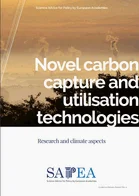 R.Schlögl, C. Abanades, M. Aresta, E. A. Blekkan, T. Cantat, G. Centi, N. Duic, A. El Khamlichi, G. Hutchings, M. Mazzotti, H. Mikulcic
R.Schlögl, C. Abanades, M. Aresta, E. A. Blekkan, T. Cantat, G. Centi, N. Duic, A. El Khamlichi, G. Hutchings, M. Mazzotti, H. MikulcicThe report offers a simplified system analysis of service delivery, which highlights a few key features. 1) Using C-rich synthetic fuels requires the use of large amounts of Renewable Energy Sources (RES) and other carbon-free energies – much larger than what is required when RES electricity or green-hydrogen is used directly for consumption. 2) Such a decrease in efficiency in the use of RES may be acceptable in the provision of: a) C-rich synthetic fuels to power long-range aircraft and long-haul ships ; and/or b) long-term storage and long- range transport of defossilised energy to compensate for the intermittency of RES. 3) For such uses, CCU-based solutions should be assessed in comparison with other alternative technologies that are beyond the scope of this report.
FULL PAPER
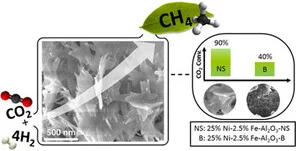
Enhanced Catalytic Activity of Iron‐Promoted Nickel on γ‐Al2O3 Nanosheets for Carbon Dioxide Methanation
C. Mebrahtu, S. Abate, S. Chen, A. F. Sierra Salazar, S. Perathoner, F. Krebs, R. Palkovits, G. Centi
CHAIR CONFERENCES

CIMTEC 2018 - 8th Forum on New Materials, Perugia, Italy, June 10 -14, 2018. Symposium FH: Advanced Photocatalytic Materials for Energy Transition, Solar-driven Chemistry and Environmental Applications,
Co-chaired by G. CENTI and S. PERATHONER.
FULL PAPER
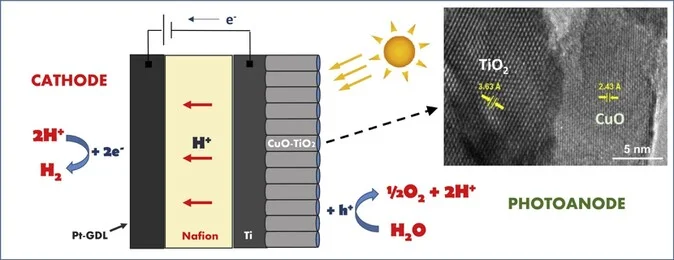
Role of CuO in the modification of the photocatalytic water splitting behavior of TiO2 nanotube thin films
J. Ferreira de Brito, F. Tavella, C. Genovese, C. Ampelli, M. V. Boldrin Zanoni, G. Centi, S. Perathoner
FULL PAPER
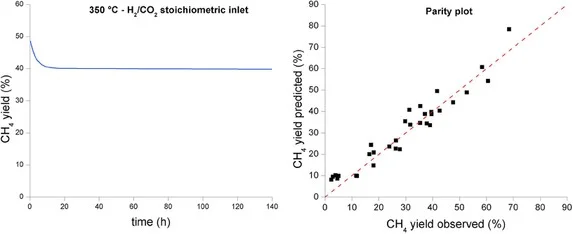
CO2 methanation over Ni/Al hydrotalcite-derived catalyst: Experimental characterization and kinetic study
P. Marocco, E. A. Morosanu, E. Giglio, D. Ferrero, C. Mebrahtu, A. Lanzini, S. Abate, S. Bensaid, S. Perathoner, M. Santarelli, R. Pirone, G. Centi
PERSPECTIVE
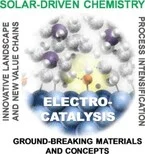
Catalysis for solar-driven chemistry: The role of electrocatalysis
S. Perathoner and G. Centi
Catal. Today 2018, in press.
FULL PAPER

Direct versus acetalization routes in the reaction network of catalytic HMF etherification
P Lanzafame, G Papanikolaou, S Perathoner, G Centi, M Migliori, E Catizzone, A Aloise, G Giordano
ESSAY

Special Issue: Artificial Photosynthesis for Sustainable Fuels
Beyond Solar Fuels: Renewable Energy‐Driven Chemistry
Paola Lanzafame, Salvatare Abate, Claudio Ampelli, Chiara Genovese, Rosalba Passalacqua, Gabriele Centi, Siglinda Perathoner
doi:10.1002/cssc.201701507
The future feasibility of decarbonized industrial chemical production based on the substitution of fossil feedstocks (FFs) with renewable energy (RE) sources is discussed.
FULL PAPER

Waste-to-methanol: Process and economics assessment
Gaetano Iaquaniello, Gabriele Centi, Annarita Salladini, Emma Palo, Siglinda Perathoner, Luca Spadaccini
doi:10.1016/j.biortech.2017.06.172
- Bio-methanol production via high temperature conversion of Refuse-derived-fuel (RdF).
- Waste-to-methanol (WtM) process and related economics were assessed.
- Estimated cost of production of bio-methanol is 110 €/t for a new WtM 300 t/d plant.
- ROI (Return of Investment) of about 29%, e.g. a payback time of about 4 years.
- WtM process halves GHG emissions with respect to methanol production from natural gas.
FULL PAPER
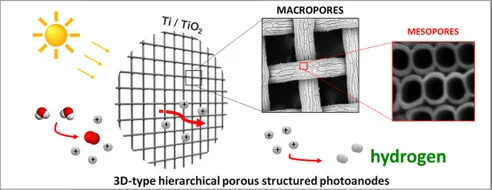
Water splitting on 3D-type meso/macro porous structured photoanodes based on Ti mesh
T. Saboo, F. Tavella, C. Ampelli, S. Perathoner, C. Genovese, B. C. Marepally, L. Veyre, E. A. Quadrelli, G. Centi
FEATURED ARTICLE

Operando spectroscopy study of the carbon dioxide electro-reduction by iron species on nitrogen-doped carbon
C Genovese, M E. Schuster, E K. Gibson, D Gianolio, V Posligua, R Grau-Crespo, G Cibin, P P. Wells, D Garai, V Solokha, S Krick Calderon, J J. Velasco-Velez, C Ampelli, S Perathoner, G Held, G Centi and R Arrigo
Nature Comm. 2018, 9, 935 doi:10.1038/s41467-018-03138-7
FULL PAPER
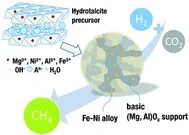
Hydrotalcite based Ni–Fe/(Mg, Al) O x catalysts for CO 2 methanation–tailoring Fe content for improved CO dissociation, basicity, and particle size
C Mebrahtu, F Krebs, S Perathoner, S Abate, G Centi, R Palkovits
FULL PAPER
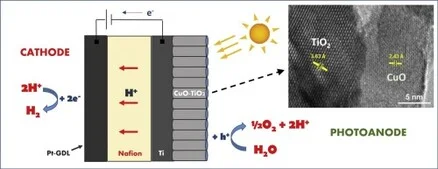
Role of CuO in the modification of the photocatalytic water splitting behavior of TiO2 nanotube thin films
Juliana Ferreira de Brito, Francesco Tavella, Chiara Genovese, Claudio Ampelli, Maria Valnice Boldrin Zanoni, Gabriele Centi, Siglinda Perathoneri
doi:10.1016/j.apcatb.2017.09.071
- The thin films were tested as photoanodes in a photo-electrocatalytic (PEC) cell.
- 2% of STH efficiency was obtained without sacrificial donors or applied bias.
- A p-n junction between the CuxO nanoparticles and TiO2 nanotubes was generated.
Update to Oct 9th, 2020
 OCEAN NEWSLETTTER
OCEAN NEWSLETTTER

